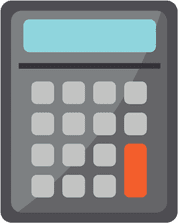You've seen it on HGTV – flipping houses seems like a fast track to big bucks, right? But as many of you know all too well, reality often paints a different picture.
I’ve flipped houses (dozens of them), managed rentals, negotiated short sales post-recession, and currently own a portfolio of apartment buildings worth over $350 million.
So when it comes to real estate, I’ve seen a thing or two – including wide profit margins in flipping houses. Sometimes I hit close to $100,000 on a single flip, and other times …well not so much.
What sets those successful flips apart from the rest? Let’s break down the 5 things that tanked a few of my deals and might be doing the same thing to your profitability.
Ignoring the 70% Rule
This golden rule states you should pay no more than 70% of the after-repair value (ARV) of a property minus the cost of repairs.
It sounds straightforward but I’ve seen several investors make this mistake.
You might think “I really like this deal” so you pay a little bit more than you should’ve. Don’t do that.
Sticking to this rule requires discipline and accurate underwriting. Remember, every time you compromise on the purchase price or miscalculate repairs, you're chipping away at your potential profit.
Overleveraging the Wrong Kind of Debt
Hard money loans are popular in the flipping world for good reason, but they come with their own set of challenges, especially if your flip takes longer than expected.
To avoid the stress and potential fees, consider raising funds from private investors or exploring other financing options that offer more flexibility.
Ignoring Local Regulations
This is a pain in the butt. It’s a lot of work to actually pull the permit which costs money and time, but then the local enforcer comes to your property to look over your work and when they do, they will find things that are wrong.
It can be a hassle, that’s true, but getting caught is even worse. It never happened to me, but it did to one of my buddies. They got shut down and a big orange sticker on the front saying “not approved for inhabitation”
I've seen projects get shut down for non-compliance, and trust me, it's not a situation you want to find yourself in. Don’t cut corners – always factor in the time and cost of doing things by the book.
Lack of Proper Research
Thorough research goes beyond just nailing the 70% rule. It involves understanding the market, the property, and the true cost of renovations.
I learned the hard way that seeing a property in person and bringing a knowledgeable contractor along for inspections can save you from unpleasant (and costly) surprises down the road.
Not Having an Endgame
Flipping houses can be profitable, but it's important to ask yourself why you're in this game. If your goal is financial freedom and passive income, flipping might not be the most efficient path.
Money only comes in when you’re actively finding, flipping, and selling houses. If passive income is what you’re looking for, maybe it’s time to consider other options – ones that can provide more scalable and long-term income.
Maybe something like apartment buildings. They provide passive income, scalability, tax benefits, and stability.
The Path Forward
House flipping can be a lucrative venture, but it's not without its pitfalls.
By steering clear of these common mistakes, you can improve your chances of success and profitability. And remember, the world of real estate investing is big; don't be afraid to explore other avenues that might align better with your long-term goals.
What's your biggest takeaway from your flipping experiences? Have you encountered these mistakes, and how did you overcome them?
Share your stories in the comments below.
